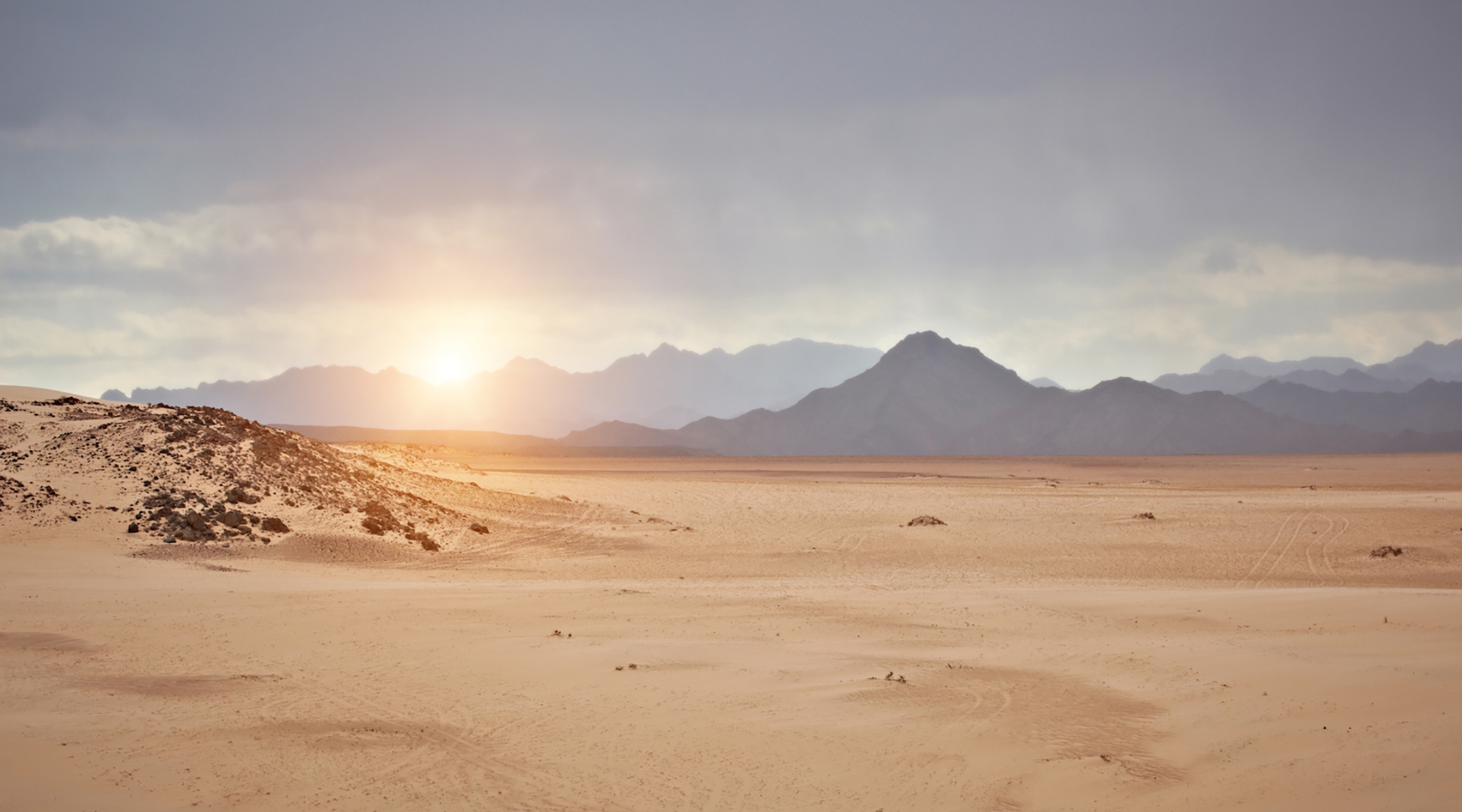This story originally appeared on My Jewish Learning.
(JTA) — Several weeks ago, I experienced the delights and the challenges of being on retreat in the high desert of New Mexico. Each morning, the sun flooded my cozy straw-bale house. Afternoon winds whipped the fields of tall grass into undulating waves, scattering the few wispy clouds and dusting every surface with a fine orange film of pine pollen. By night, a river of glittering stars flowed across the darkened sky.
For all its raw beauty and breathtaking vistas, the high desert is a harsh environment. I was warned to be on the lookout for rattlesnakes, scorpions and black widow spiders, not to mention the legions of bloodthirsty mosquitoes that appeared at sunset. My gut rumbled and my head ached with the sudden shift from my sea level home to an altitude of 7,300 feet. In the extreme dryness my skin itched, my lips cracked and my nose, irritated by the pollen, ran constantly. To compound my physical discomforts, distresses I’d been repressing for months bubbled up as searing neck and shoulder pain, obsessive thoughts and troubling dreams. I drank a lot of water and breathed deeply, praying that in time my body would adapt and my mind would clear.
Being in the desert especially attuned me to the weekly Torah readings from the Book of Numbers, whose Hebrew name, Bamidbar, means “In the Wilderness.” This Shabbat’s double portion, Matot-Masei, comprises its final chapters. The entire book — and much of the Torah, in fact — unfolds in an arid desert wilderness not unlike the scrublands of northern New Mexico. For 40 years, after narrowly escaping Pharaoh’s pursuing army at the Sea of Reeds, the Israelites roamed this unforgiving land, crisscrossing its hills and ravines, beset by challenges, struggling to find ways to live together and obey the dictates of a demanding, often wrathful, cloud-thundering, flame-throwing God.
Masei opens with a list of 42 spots in the wilderness where the Israelites camped along the way — 42 phases of their epic trek from slavery toward the ever-elusive promised land. Trouble and discord have plagued them every step of the way. Torah scholar Avivah Zornberg describes this wilderness as a space of “bewilderment,” “a quicksand ready to consume human bodies” where “cries and whispers and rages and laments fill the air.” Other voices in the tradition romanticize the people’s extended desert sojourn, nostalgically recalling the spiritual intimacy of those times when God’s voice would pour through Moses and the Torah, like a marriage contract, bound them and all of nature to divinity.
Why is the midbar so central to the Israelites’ mythic journey? What is it about wilderness that both fascinates and repels, excites and terrifies? For me, midbar represents not simply a tract of wild land, but a state of mind. Unbounded, undomesticated, these trackless “deserts of the heart” are those times in my life when I don’t know which way to turn or what’s coming next, when I’ve lost my internal compass and feel at once overwhelmed, unmoored and wrenchingly vulnerable. And yet the shattering realities of the midbar can also confer a breathtaking sense of freedom, inducing me to wriggle out of old identities like a snake shedding its skin.
A radical teaching attributed to the famous second-century mystic Rabbi Shimon bar Yochai answers the question of why God brings the people the long way around on their way out of Egypt like this: “Only to those who eat manna is it given to really study the Torah.” (Mekhilta Beshalach 1:34) Manna, the food of faith that drops from the sky to feed the Israelites during their desert wanderings, symbolizes their dependence on an invisible power for sustenance. This midrash suggests that only those who face the rigors and incalculable risks of the midbar, trusting they will be provided for, are able to receive the deeper layers of meaning buried in Torah.
During my recent retreat, my mind and body eventually settled. As I leaned into the land, offering up to it my fears, self-judgments and perceived limitations, I began to hear whispers of wise inner guidance and to feel enveloped in a protective, sheltering presence — something akin to what sages and mystics through the ages have referred to as shekhinah, a sense of immanent divinity woven into everything. The Hebrew word for wilderness, midbar, shares a root with the verb l’daber, to speak. The desert spoke to me, fed me, renewed me and softened my heart. I received its teaching as a gift, with humility and gratitude.
Returning home to the city, I faced a challenge similar to what I imagine the ancient Israelites must have faced at the end of Bamidbar as they prepared to leave behind 40 ragged and majestic years of wilderness strife and holy intimacy: How shall I weave the open spaces, the silence and the words, the struggles, triumphs and raw emotion of that desert time into the daily routines of work, home and relationships? How can I keep the whispers and visions, the gifts from the wilderness, alive in my soul?
Holding these questions, I find myself listening for the silences, the unbidden voices, and even the doubts and creative confusions that stir just beneath the surface.
JTA has documented Jewish history in real-time for over a century. Keep our journalism strong by joining us in supporting independent, award-winning reporting.







